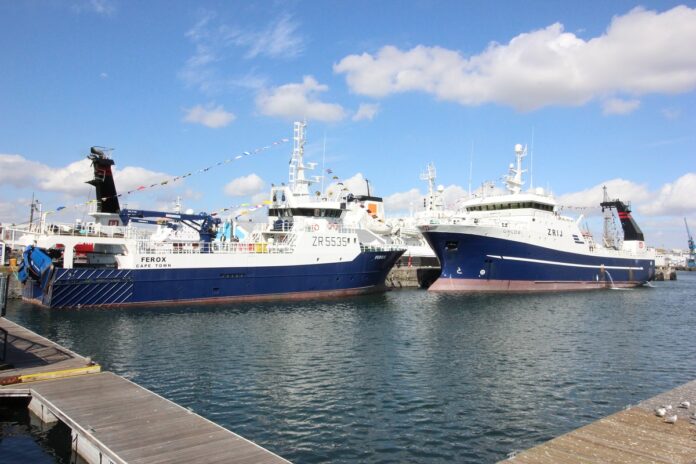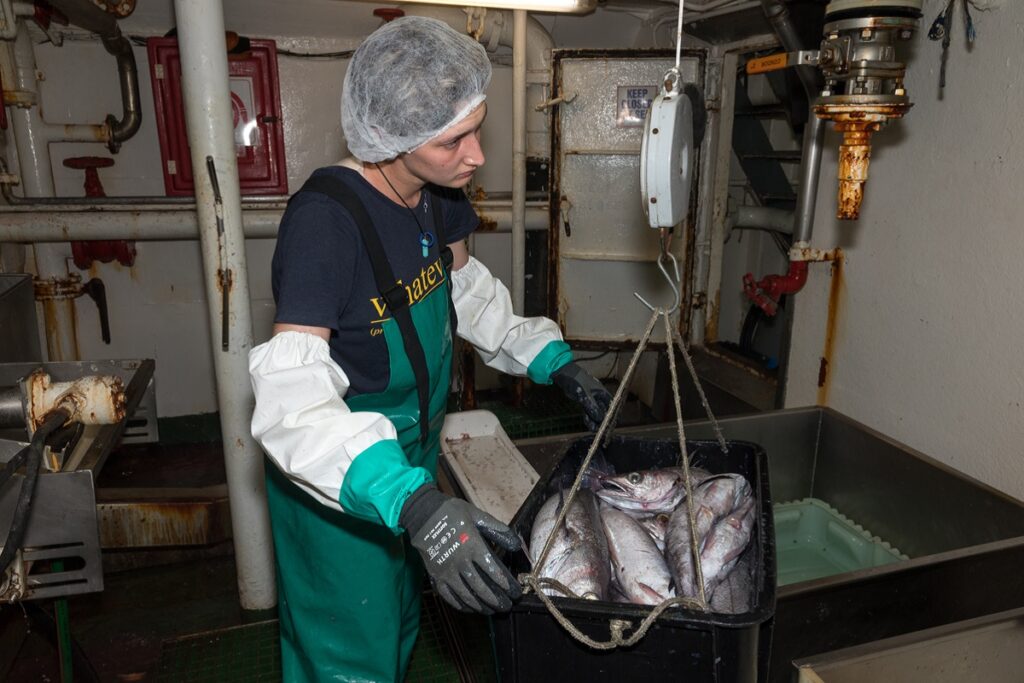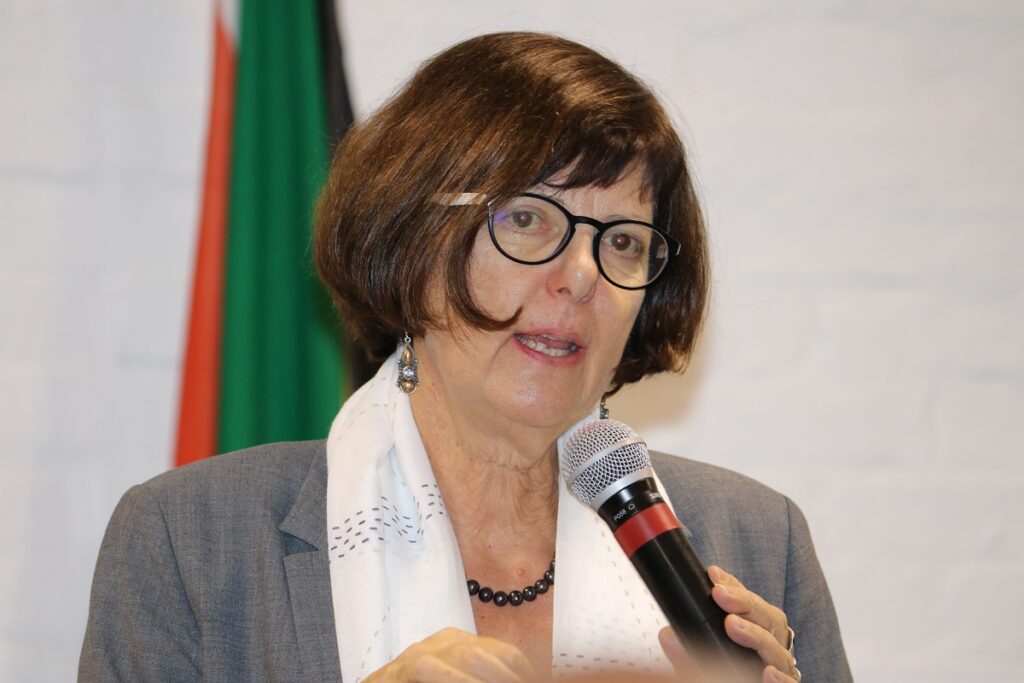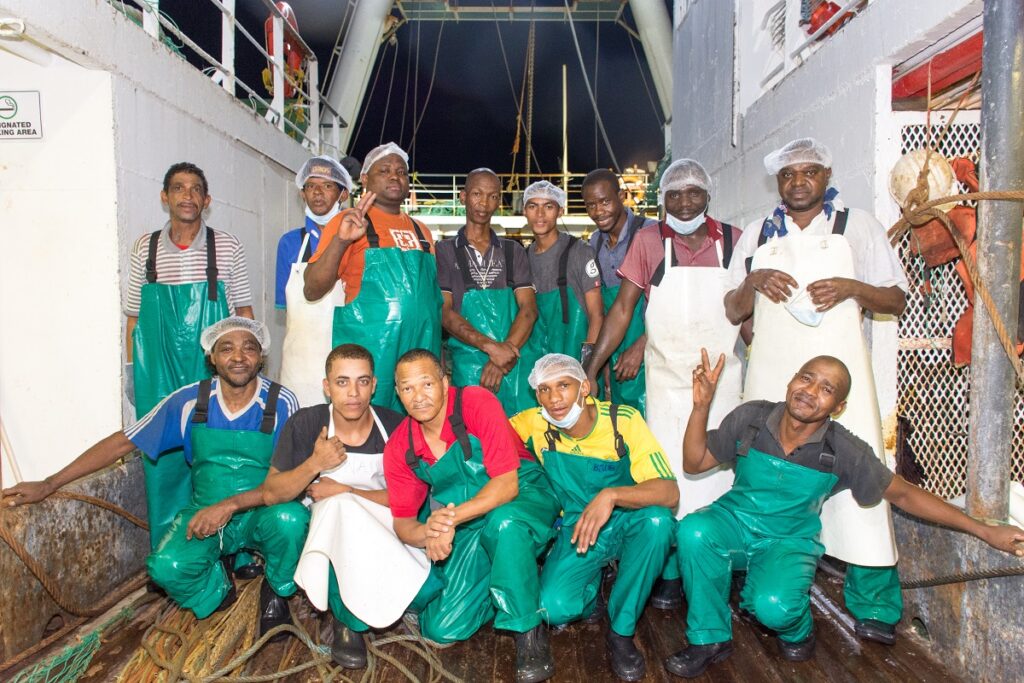
On 24 March, the South African Deep-Sea Trawling Industry Association, SADSTIA, celebrates its 50th anniversary. In a series of articles, Fishing Industry and Aquaculture New Southern Africa looks back at three periods in the past 50 years during which SADSTIA played an influential role in the development of the deep-sea trawl fishery, and the fishing industry as a whole. This is the last of three articles and about SADSTIA’s fifteen years of stability and sustainability.
The allocation of long-term rights in 2005, ushered in a period of stability that was characterised by significant investment in fishing and processing assets, particularly on the part of the biggest rights holders in the deep-sea trawl fishery. In 2015, I&J expanded its fleet with the addition of Umlobi, a 66 m freezer factory trawler and Ferox, a purpose-built wetfish vessel. The company also upgraded its processing assets, bringing its total investment package to almost half a billion Rand. Over the same period, Sea Harvest purchased the freezer trawler Atlantic Peace and invested in its expansive processing plant in Saldanha Bay. It added the freezer trawler Miriam Makeba to its fleet in 2016, following a R45 million refit.

Fisheries observer, Anzelle Reyneke, at work on Harvest Krotoa in 2022. The support by SADSTIA and SECIFA of an independent scientific observer programme is key to maintaining the MSC certification and access to European markets. Photo: Claire Ward
The subject of fisheries sustainability gained unprecedented global attention in the early 2000s and SADSTIA was quick to leverage government support for the assessment and accreditation of the trawl fishery for hake by the Marine Stewardship Council (MSC). The fishery was duly certified by the MSC in 2004, becoming the first hake fishery in the world to achieve the prestigious MSC endorsement. It was subsequently re-assessed and re-certified in 2009, 2015 and 2021.
During each five-year certification period, the fishery has been required to meet stringent environmental conditions. Since 2021, the focus has been on monitoring and managing the trawl fishery’s interactions with endangered, threatened and protected species, particularly sharks, and recording its impact on the seabed. A study conducted in 2016, determined that the MSC certification has enabled SADSTIA members to create new export markets in northern Europe and, as a result, helped to sustain the value of the trawl fishery.

In August 2019, Minister Barbara Creecy published a Government Gazette that suspended the fishing rights allocation process scheduled for 2020. A new process began in May 2021. Fifteen-year rights were allocated to the deep-sea trawl fishery on 28 February 2022 and the appeals process was concluded on 4 October 2024. Photo: Claire Ward
The second allocation of long-term rights
SADSTIA marks its 50-year milestone shortly after the completion of a second allocation of long-term, 15-year rights in the deep-sea trawl fishery for hake. The rights allocation process began in 2021 with a consultation period. SADSTIA provided extensive input to the draft policies published by the Department of Forestry, Fisheries and the Environment, advocating for an outcome that would secure the future of the many thousands of South Africans that depend on a viable and globally competitive hake deep-sea trawl fishery for their livelihoods.

The factory team on the freezer trawler, Laverne. On 14 December 2021 the Bargaining Council for the fishing industry, which provides a formal platform for negotiations around wages, working conditions and benefits for sea-going workers, marked its 20th anniversary. Photo: Claire Ward
An allocation of rights was made to the deep-sea trawl fishery for hake on 28 February 2022. Appeals against the allocation decision were granted and on 4 October 2023, the Minister of Forestry, Fisheries and the Environment, Barbara Creecy, announced her appeal decisions which confirmed the allocation of rights to 37 fishing companies.
The announcement of the appeal decisions finalised an extremely lengthy and demanding rights allocation process. SADSTIA expressed its confidence that the 15-year rights period would usher in a new period of stability, allowing the 37 rights holders in the fishery to invest, modernise and protect jobs.
In 2024, SADSTIA anticipated the start of a process to update and amend the Marine Living Resources Act which governs the management of small-scale, recreational and commercial fisheries in South Africa. The Act was passed in 1998 and a suite of updates is anticipated to recognise and align the legislation with the substantive changes that have taken place in the fishing industry in the intervening years.
If you have missed the other articles read them here: SADSTIA Celebrates its 50th Anniversary; SADSTIA Marks 50-Year Milestone; and SADSTIA Celebrates its Golden Jubilee



















